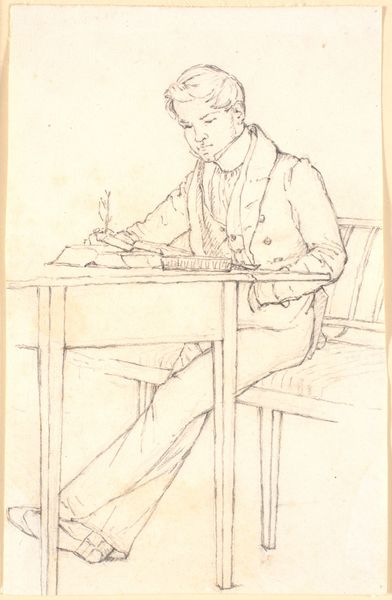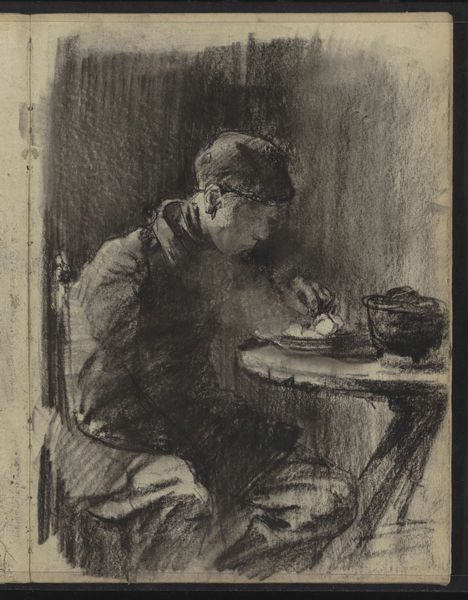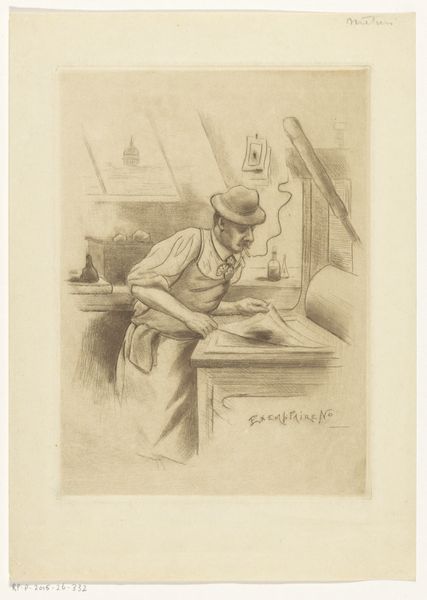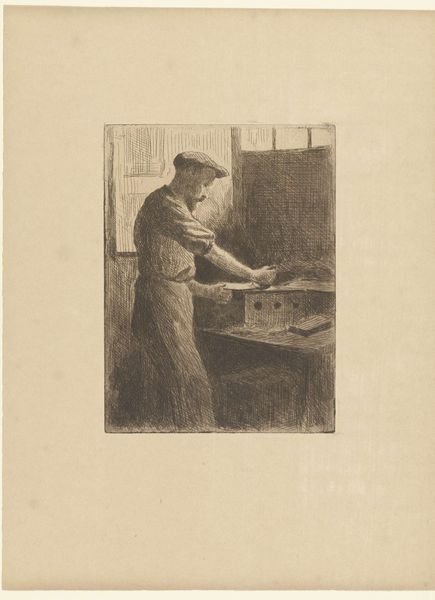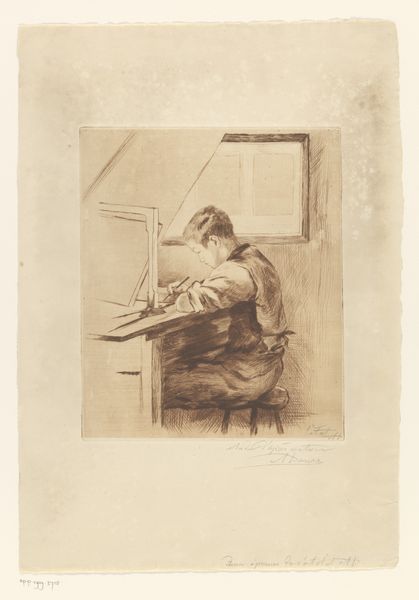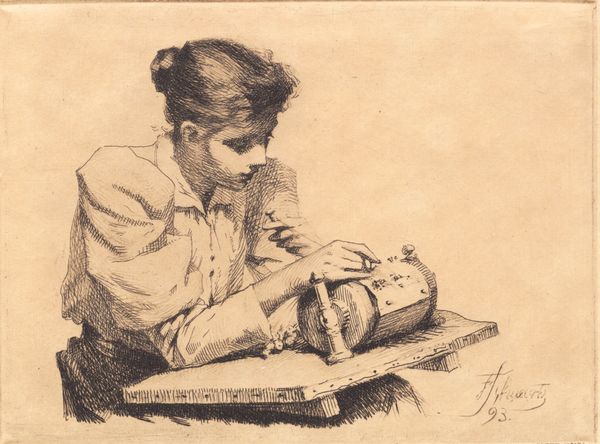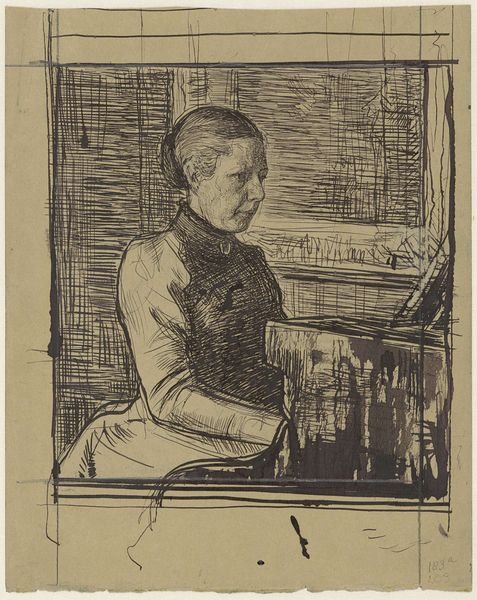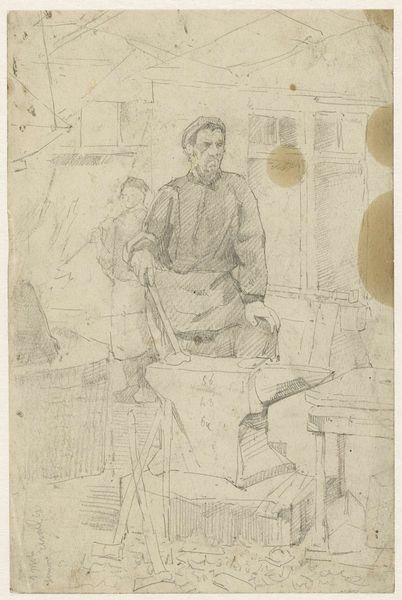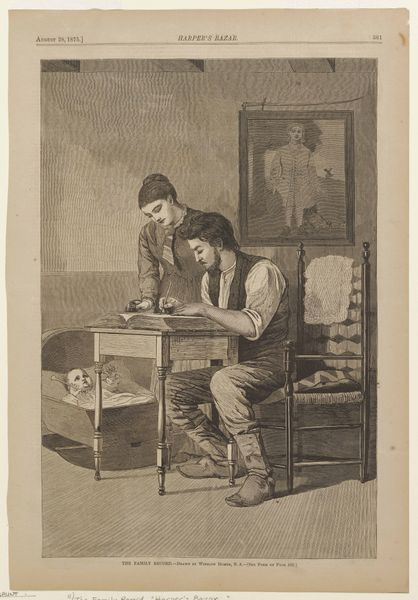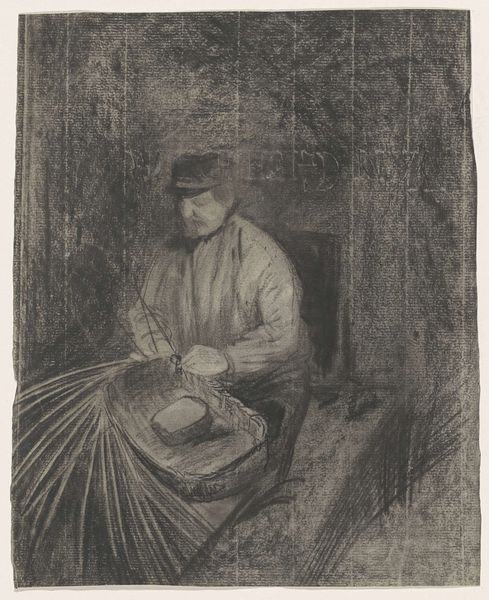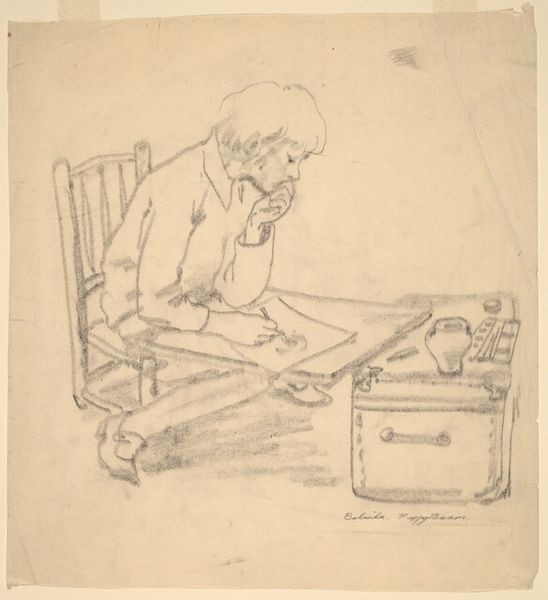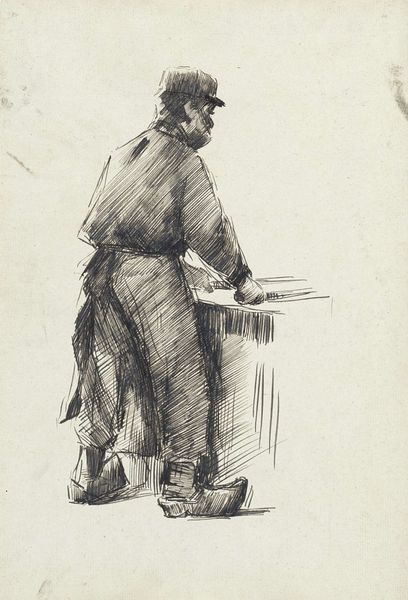
drawing, pencil
#
drawing
#
pencil sketch
#
pencil drawing
#
pencil
#
genre-painting
Dimensions: height 309 mm, width 208 mm
Copyright: Rijks Museum: Open Domain
Curator: The first thing that strikes me about this pencil drawing is how grounded and intimate it feels. Editor: Indeed. We are looking at "Pottenbakker aan zijn draaischijf," or "Potter at his Wheel," created by Herman Heijenbrock sometime between 1881 and 1948. I think Heijenbrock really captured a feeling here—a reverence for manual labor and the creation of everyday objects. Curator: The roughness of the medium—the pencil itself—amplifies that feeling for me. You see the immediate marks, the pressure, the hand of the artist so directly linked to the hand of the potter. And both are, of course, directly involved with the shaping of raw materials into a finished product for everyday use. It's pure materiality in action! Editor: I agree, the rawness is palpable. And viewing it now, it serves as a poignant reminder of the often-unseen labor that goes into producing the objects we take for granted. The social history surrounding this piece feels crucial; Heijenbrock positions this potter with a certain dignity. Are we meant to reflect on the shift away from handcrafted items towards mass production, perhaps? Curator: Precisely! I think Heijenbrock wants us to consider the human element embedded within objects. Look at the craftsman's concentration, the simple tools; this drawing functions as an artifact in itself, recording a specific kind of work and its place in society. He's documenting both the skill and the physical labor, in a way conferring a kind of nobility to the act of creation. Editor: Absolutely, and consider how museums shape this narrative. By exhibiting a drawing like this, aren’t we implicitly elevating it? Transforming a depiction of manual labor into a valued object for consumption within a gallery space? There's a compelling paradox at play, showcasing labor within the elite walls of art institutions. Curator: Yes, the act of display changes everything. We highlight not just the skill, but the social context and the implications of transforming raw material into crafted good, reminding people of the origin and processes in production. It invites us to question the values we assign to different kinds of work and different kinds of objects. Editor: It makes me think differently about the objects I surround myself with—where they come from, and what kind of labor was involved in making them. A powerful and necessary reminder. Curator: Agreed, I'll certainly appreciate my next handmade mug with a new perspective.
Comments
No comments
Be the first to comment and join the conversation on the ultimate creative platform.

